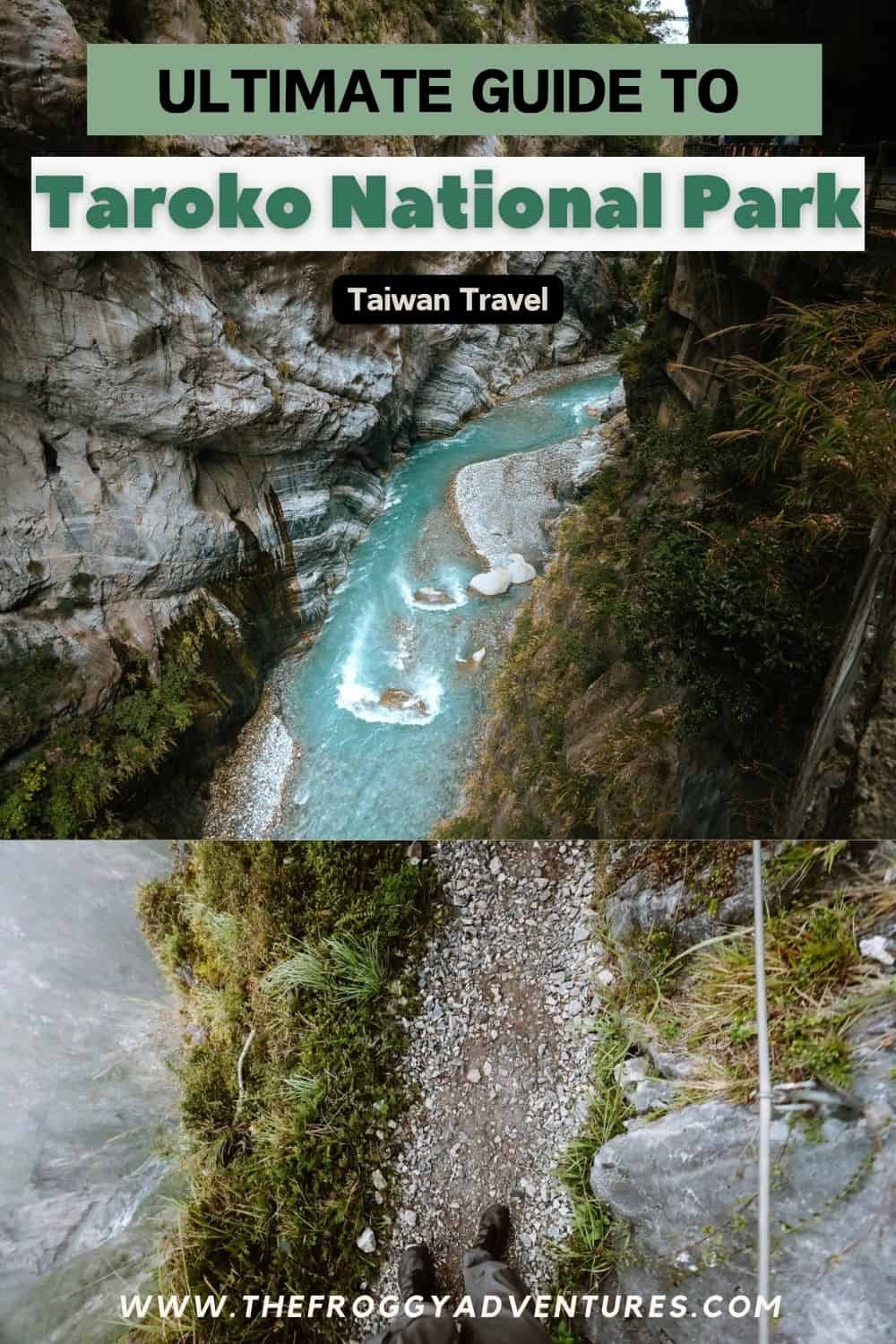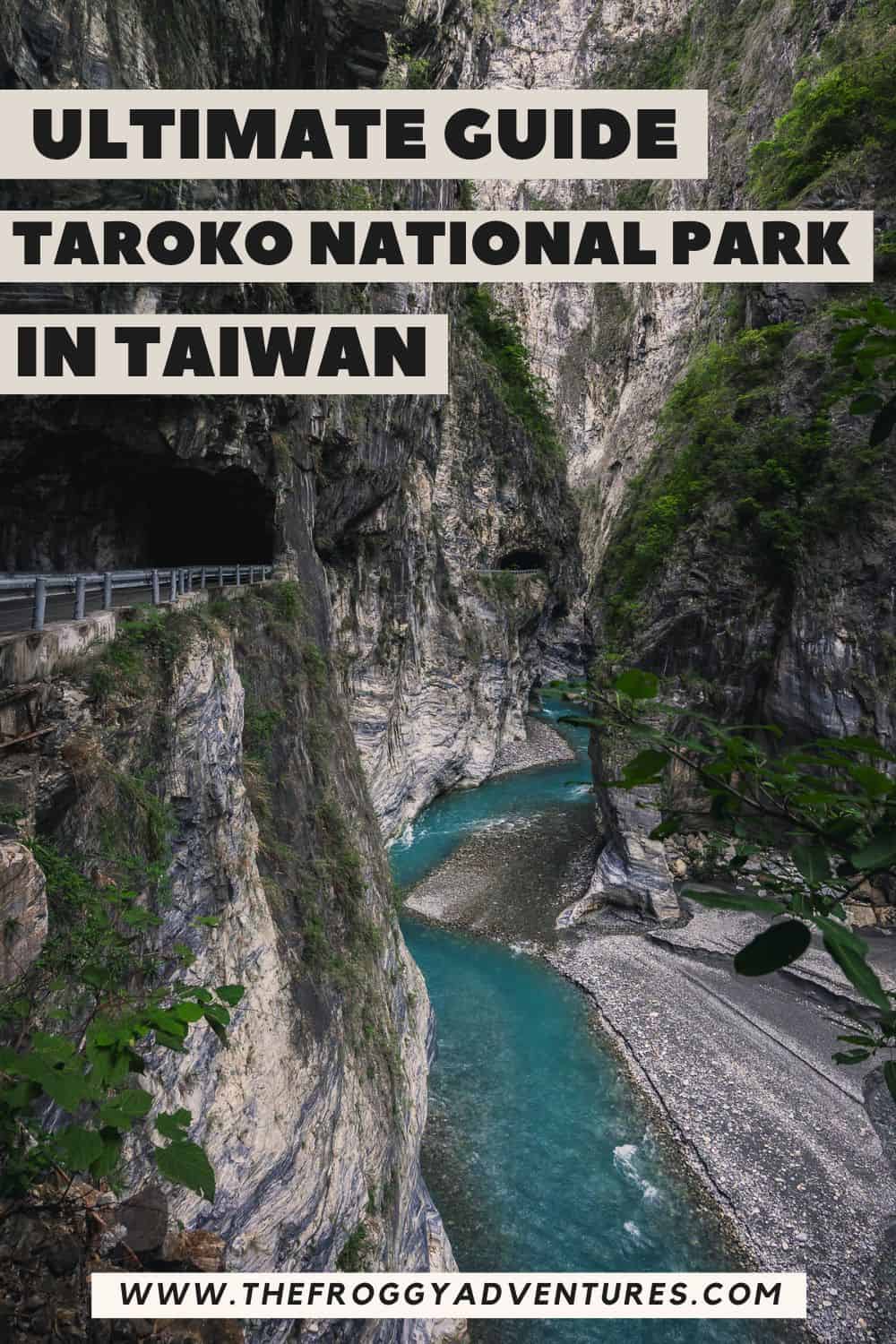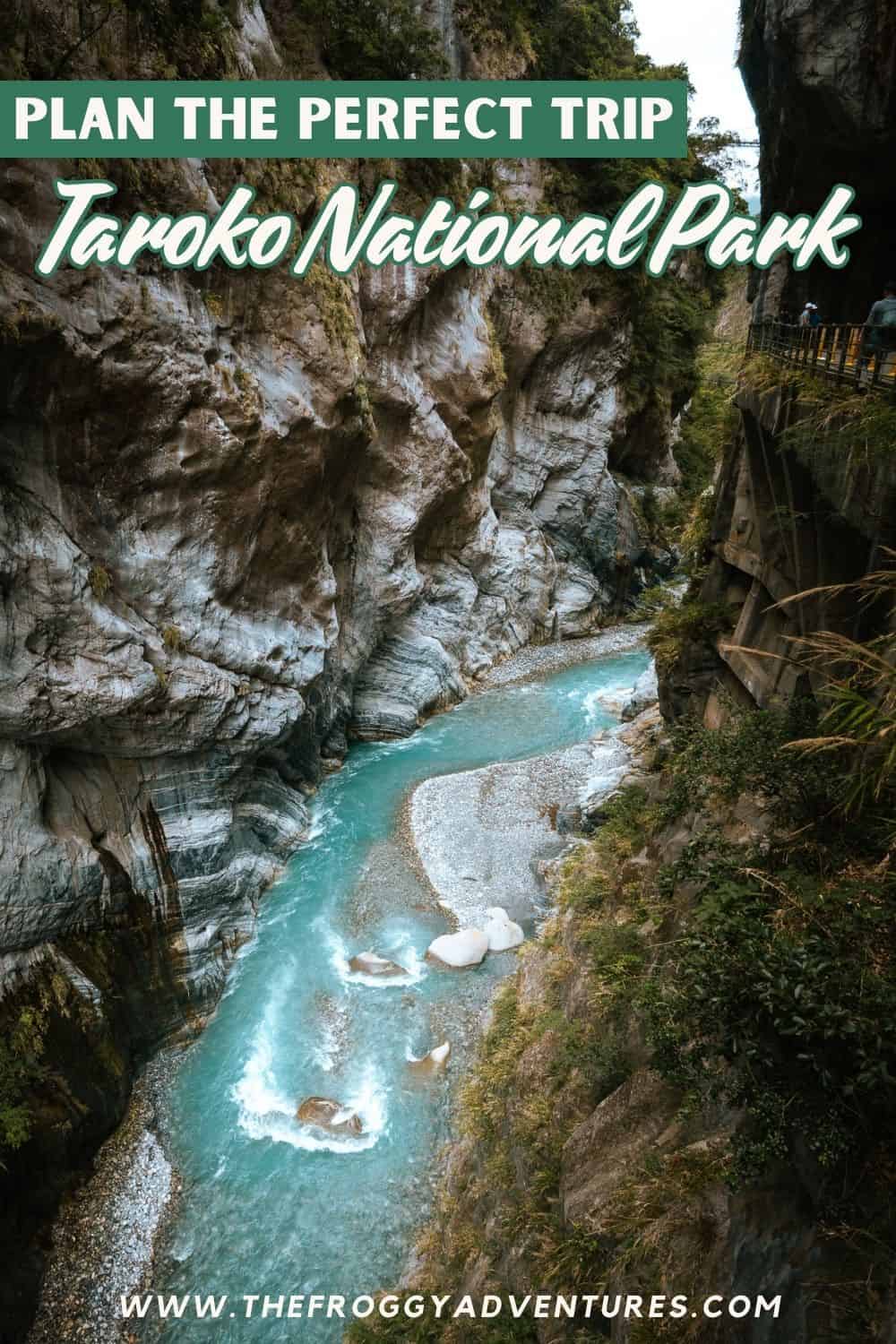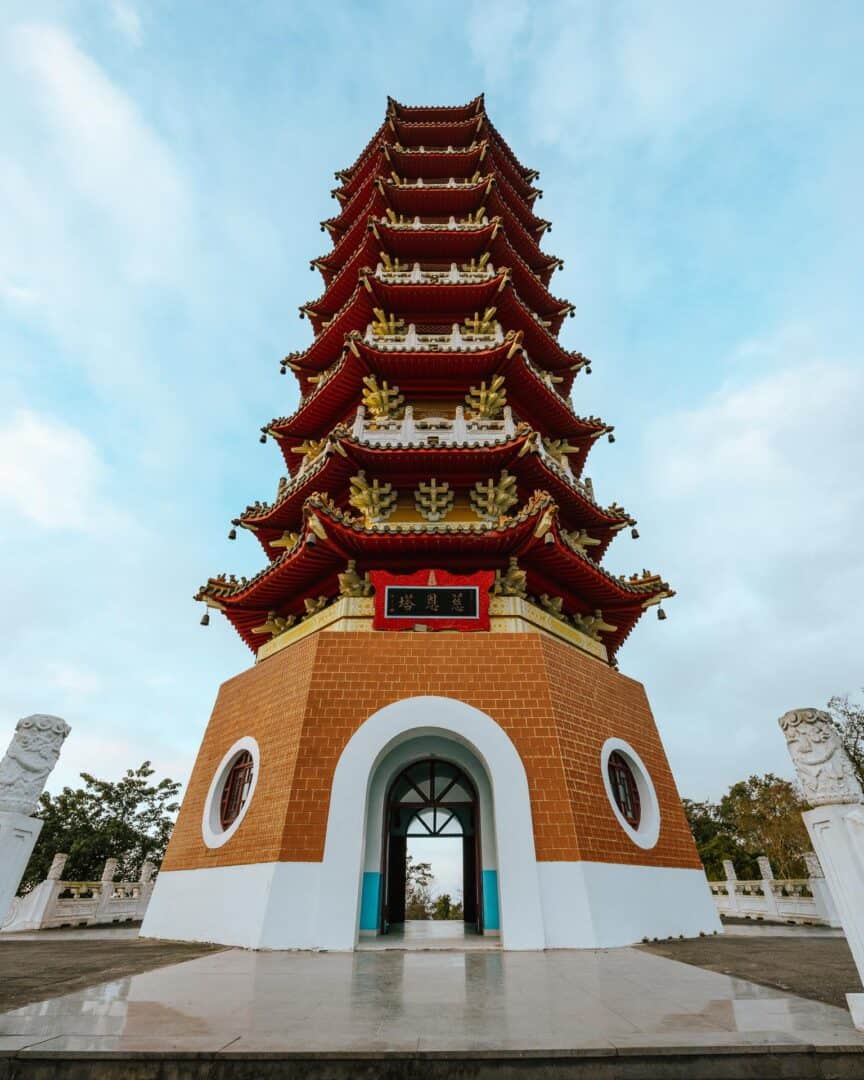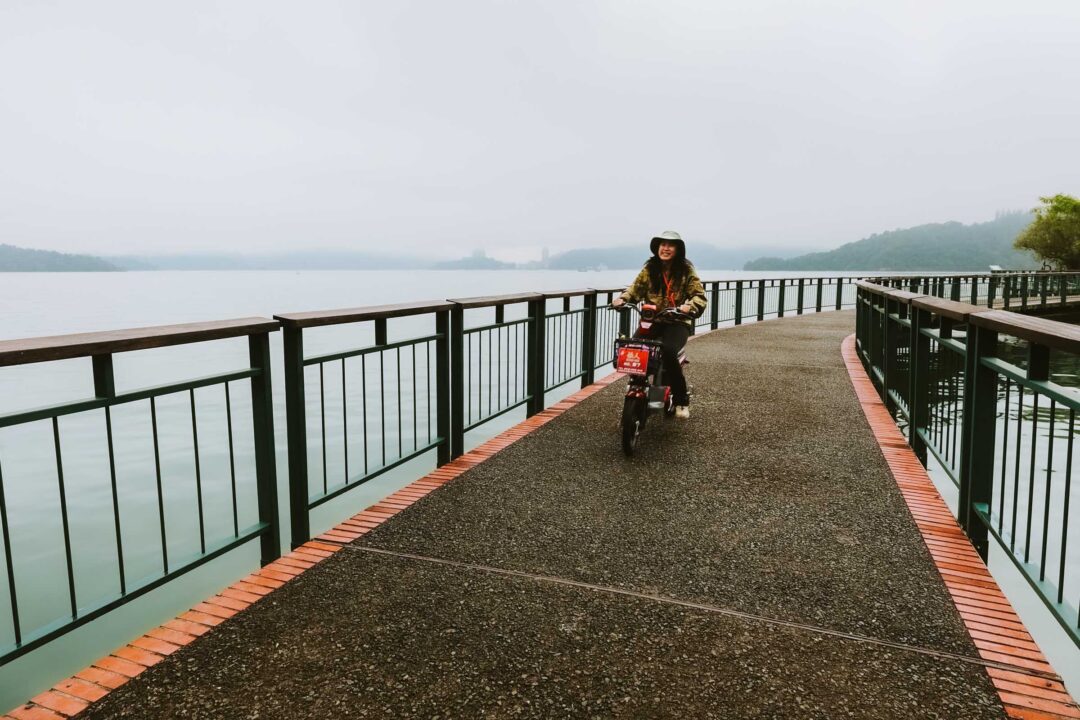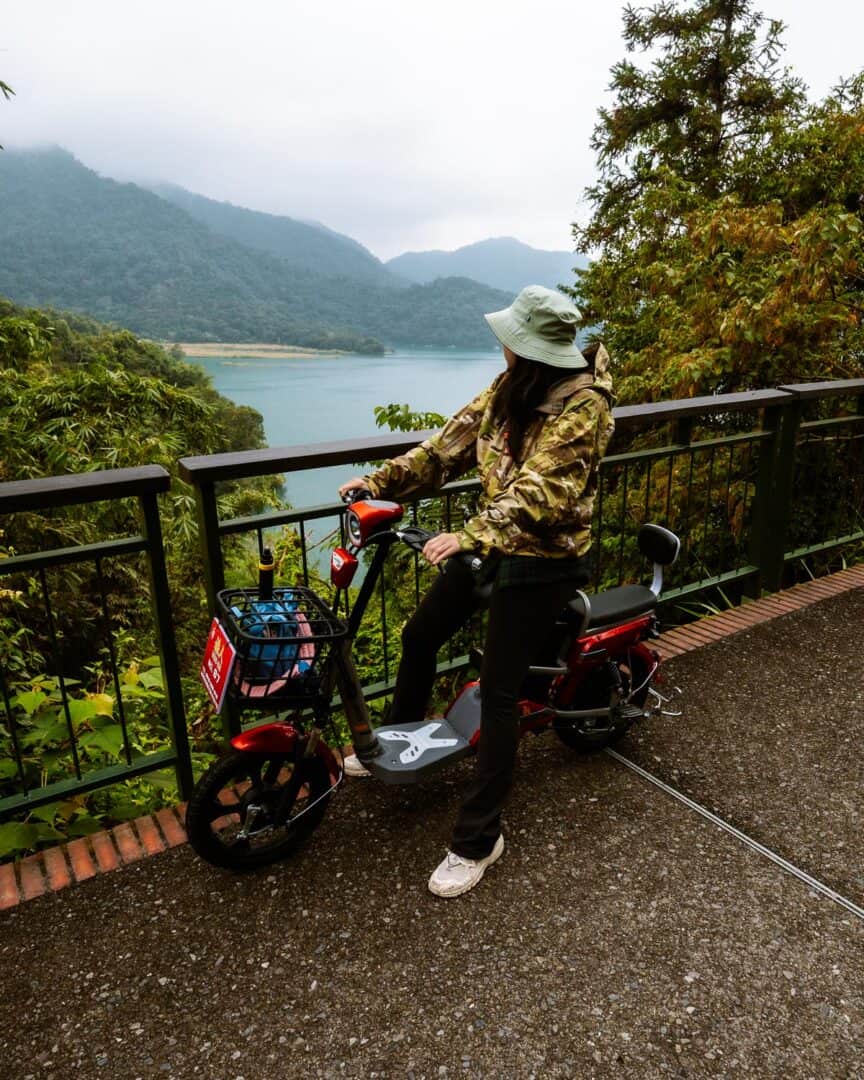Taiwan has no shortage of breathtaking places, and few of them come close to Taroko Gorge.
With its sheer marble cliffs, aquamarine rivers, lush foliage, and wildlife, Taroko Gorge stands out as one of the best places in Taiwan to get up close to raw natural beauty.
Update: In April 2024, a massive earthquake struck Taroko Gorge, completely changing the landscape and heavily damaging the national park. Taroko Gorge is currently closed to visitors until further notice.
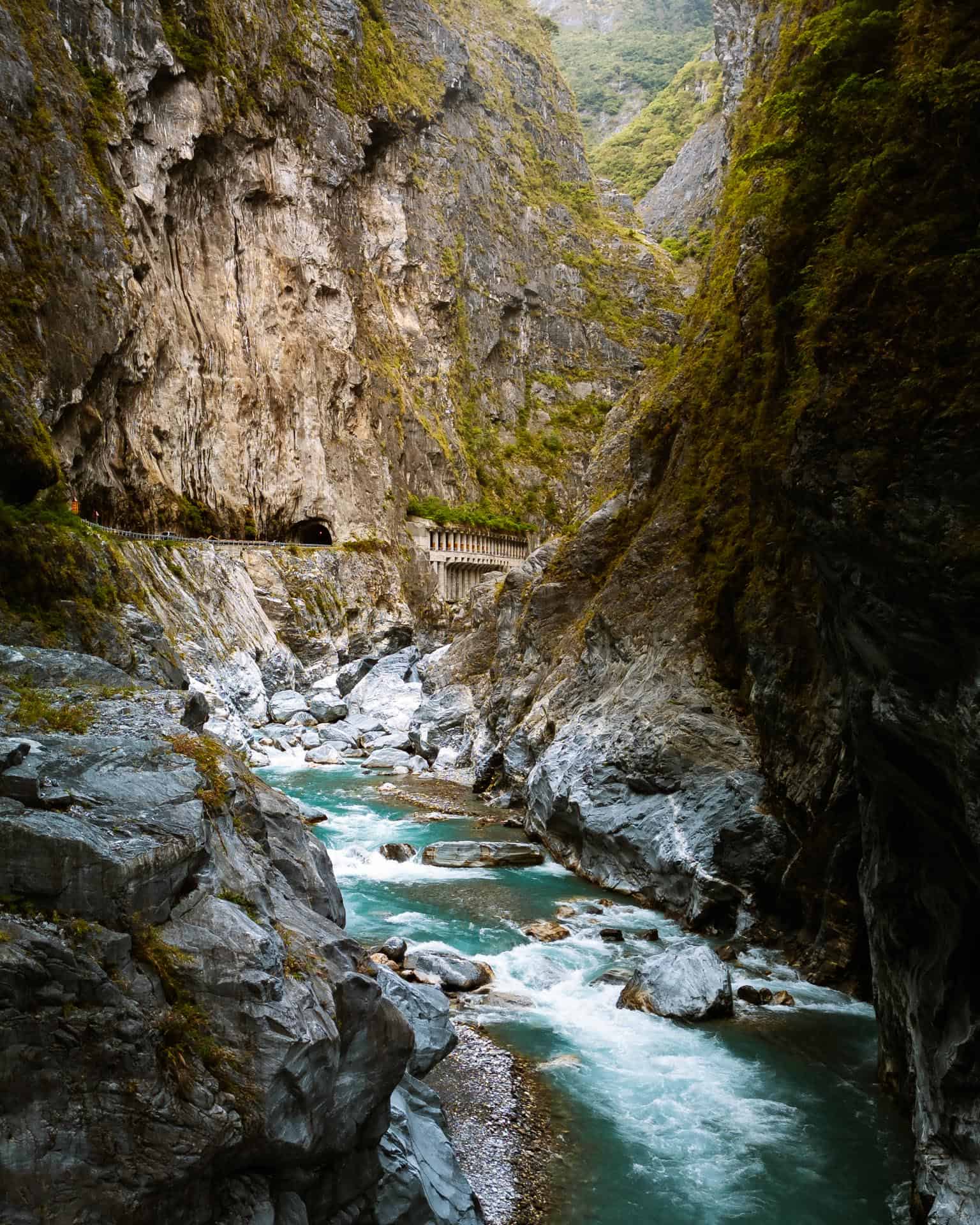
Things to Do in Taroko Gorge
The beauty of Taroko Gorge is that there is something for all types of travelers. You can stick to the road and see the best parts of the gorge, or hit the hiking trails and dig deeper into rugged adventure – the choice is yours.
If you are based in Taipei you can check out the top-rated Taroko Gorge One-Day Tour from Taipei, which includes transportation and a guide to Taroko Gorge.
Zhuilu Old Road Trail
Perhaps the most famous hike in Taroko Gorge is the Zhuilu Old Road Trail.

The hike starts at a suspension bridge that crosses the Liwu River, then ascends 300 meters up the mountain where it turns into a perilous footpath carved into the cliffside.
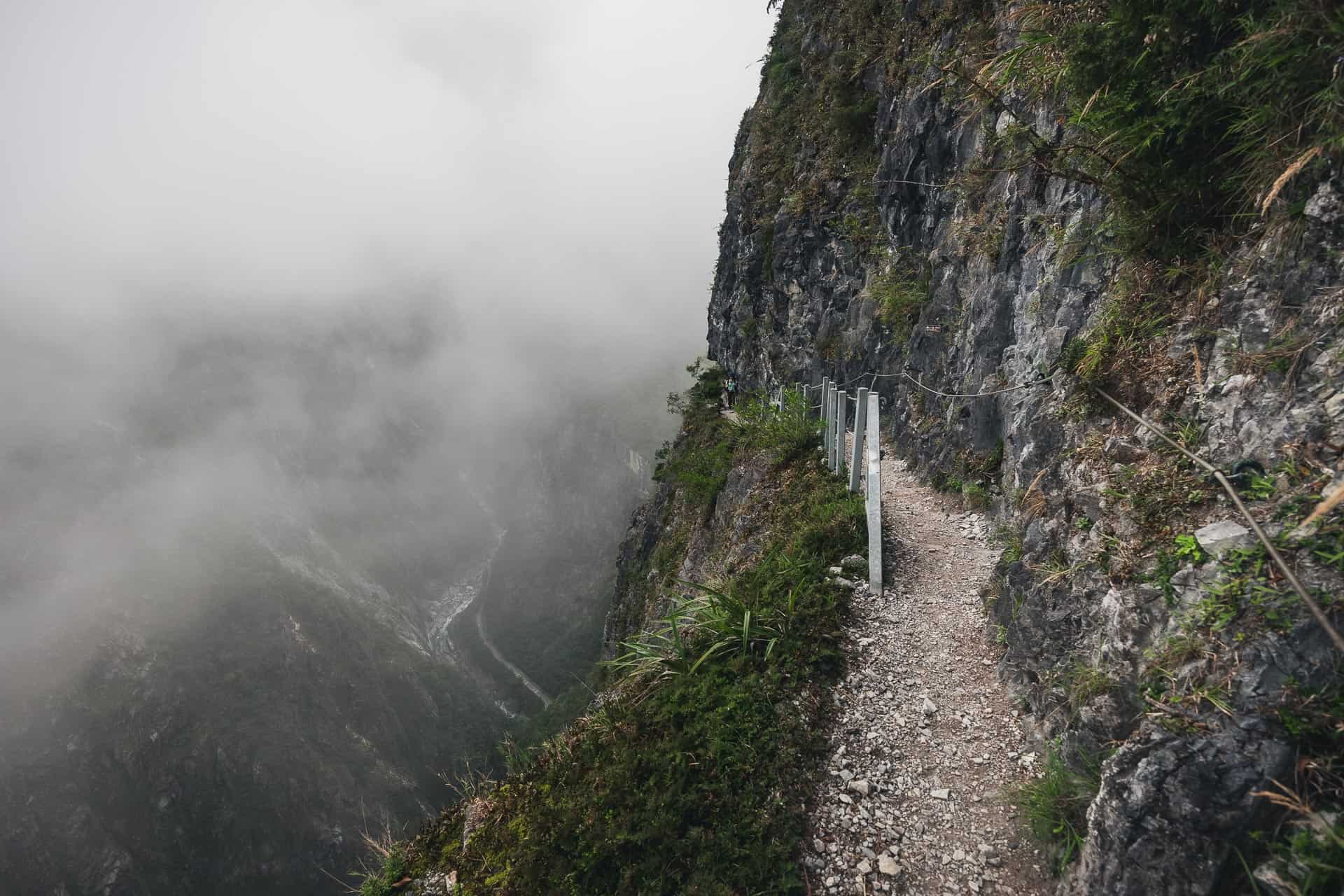
Hiking the Zhuilu Old Road Trail is not for the faint-hearted. There are points where nothing is preventing you from falling off the mountain down into the gorge below.
Because of its popularity, the Taiwanese Government limits the number of hikers on Zhuilu Old Road to 96 people on weekdays and 156 people on weekends and holidays.
If you want to hike Zhuilu Old Road, you need to apply for a permit at the Taroko National Park website. It took us about 2 weeks to get our permit to hike Zhuilu Old Road after submitting our application, so we recommend applying for a permit well in advance.
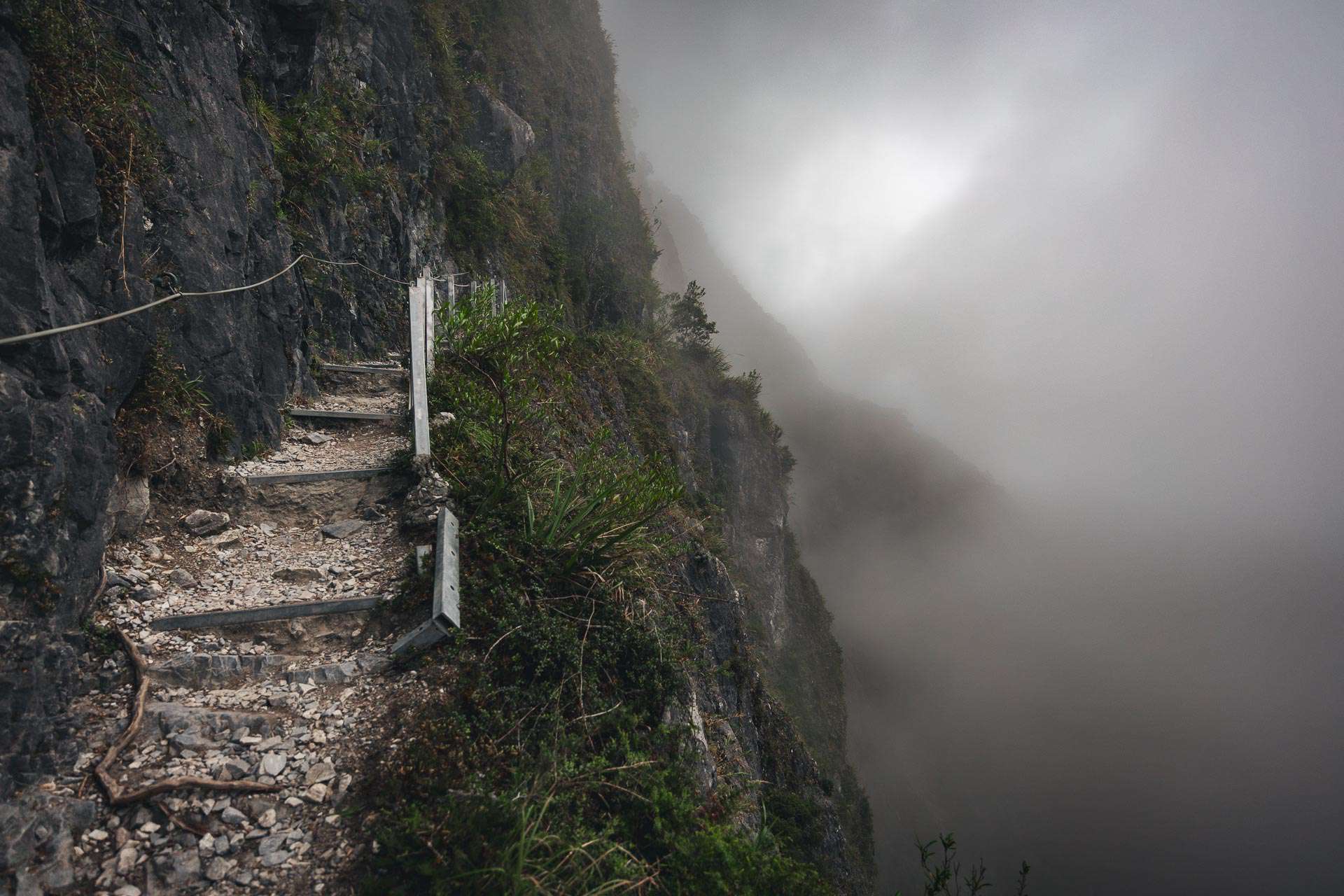
And don’t think that you can just sneak on the trail without a permit—access to the trail is through a suspension bridge that goes across the river, and it’s monitored by national park staff. We had to check in and check out when starting and ending the hike.

Read our full blog post: Zhuilu Old Road: The Complete Trail Guide
Changchun Shrine
📍 Changchun Shrine – Google Maps
The Changchun Shrine is built on the top of a waterfall, which makes it unique and beautiful. You don’t even need to go to the shrine to appreciate it. An awesome view of the shrine is visible from the parking lot where you can witness the waterfall cascade down the side of the mountain with the shrine sitting on top of it.

The Shrine was built to commemorate those who died while constructing the road that goes through Taroko Gorge—the Zhongheng Highway.
Yanzikou Trail (Swallow Grotto)
📍 Yanzikou Trail – Google Maps
Walking the Yanzikou Trail is one of the most popular things to do in Taroko Gorge. The trail is part of the old highway that goes through the gorge, and you’ll be walking on the road for parts of the trail.

The Yanzikou Trail goes through a series of tunnels and passes through the gorge at its narrowest point. The narrowness causes the river to be the most rapid at this portion of the gorge.

Yanzikou Trail goes right through an area called Swallow Grotto. Swallow Grotto is named after the swallows that nest in holes on the gorge’s sides. These holes were formed by the river cutting into the cliffside, creating perfect spots for swallows to nest.
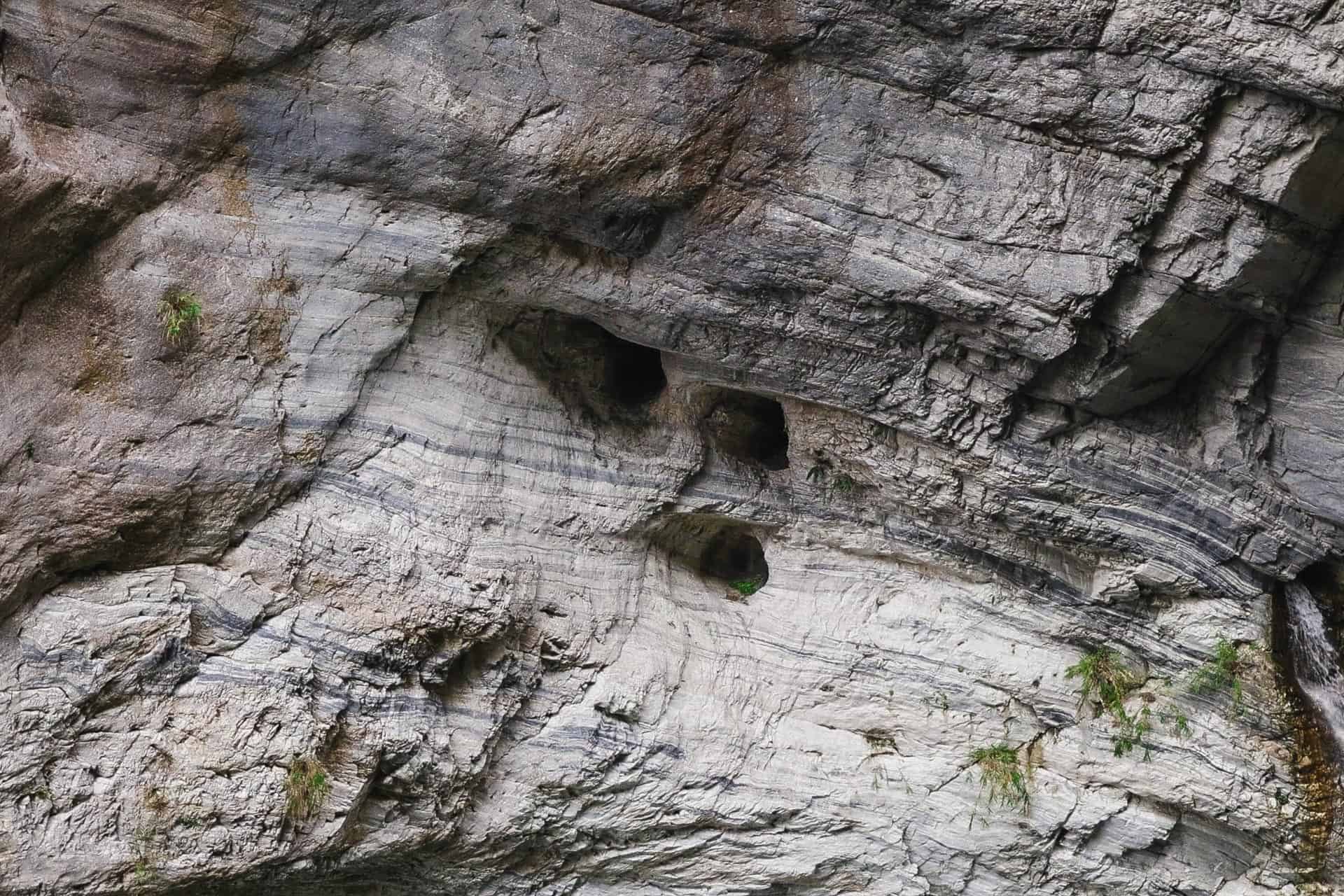
The area around this trail is known for rockfalls, so if you’re hiking the Yanzikou Trail, stop at the Xipan Check-in Station to borrow a free hard hat before heading to the trail.
Taroko Elder Stone
📍 Taroko Elder Stone – Google Maps
At the end of the Yanzikou Trail, the Taroko Elder Stone sits in the gorge, seemingly peering into the water. The marble cliffside is shaped in such a way that resembles a chief or elder.
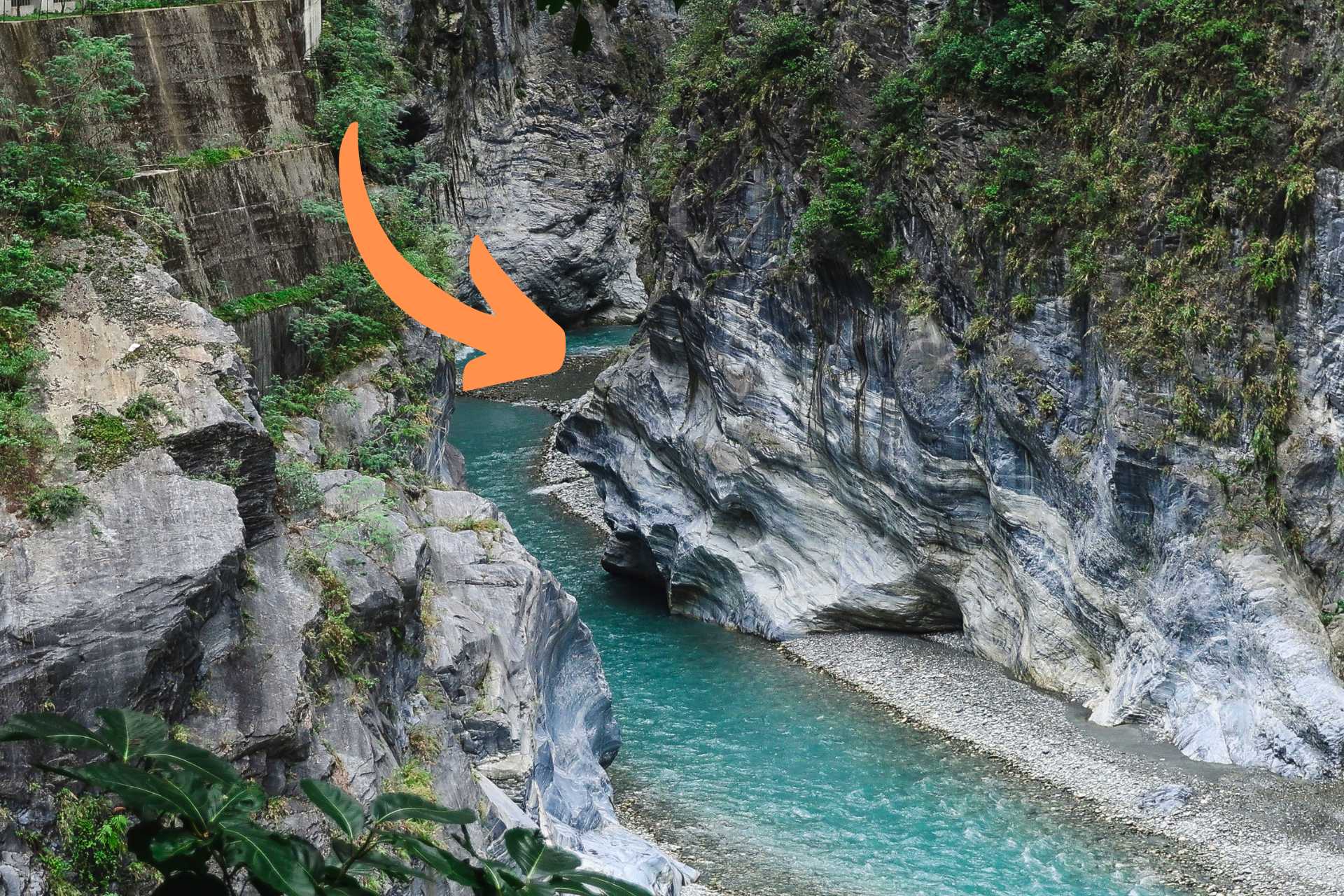
To see the Elder Stone, go to Taroko First Taste Pit Stop Cafe at the western end of the Swallow Grotto Trail. The Elder Stone is easily visible inside the gorge from the cafe, so enjoy a cup of coffee while viewing the stone.
Fuji Cliff
While sightseeing through Taroko Gorge, we discovered Fuji Cliff and its unique photo spot.
We were looking at the river and noticed a tour guide taking panoramic photos of people, including the sky.
At first, we had no clue what the deal was but the friendly guide asked us if we wanted a photo too.
We posed for a photo, and after the guide showed us our photo he pointed out that the shape of the cliff and the trees above created an outline of Taiwan!
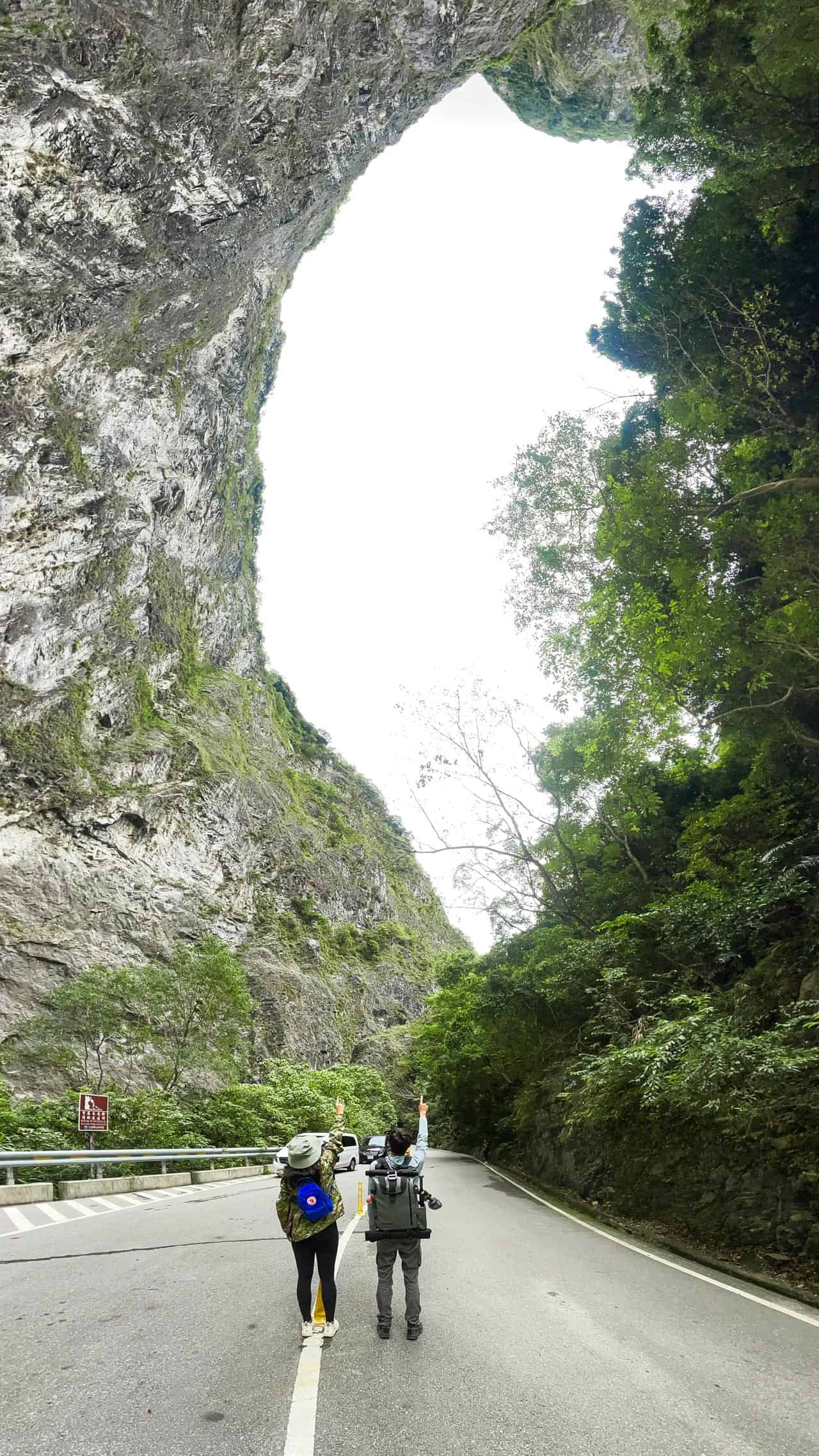
It was a cool moment when we realized this, and it made us wonder who was the first person to figure out that the sky paints a picture of Taiwan.
Shakadang Trail
📍 Shakadang Trail – Google Maps
The Shakadang Trail is one of the most “no-nonsense” trails that we’ve ever hiked. It starts at the mouth of the Shakadang River and follows the river upstream into a gorge.

The Shakadang Trail was extremely scenic from the moment we started hiking. We were treated to views of the crystal-clear water from the river and massive boulders in the river and on the side of the trail.
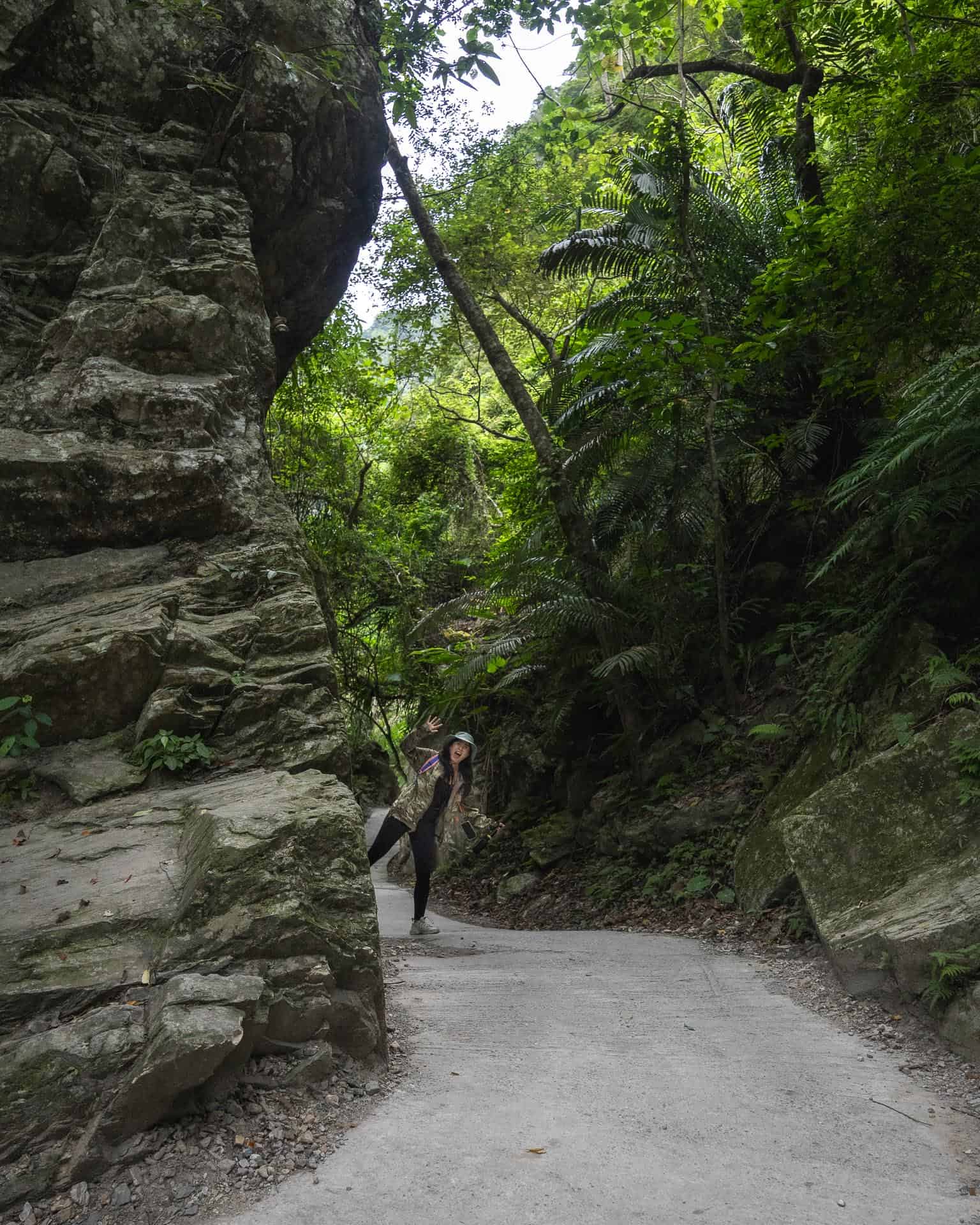
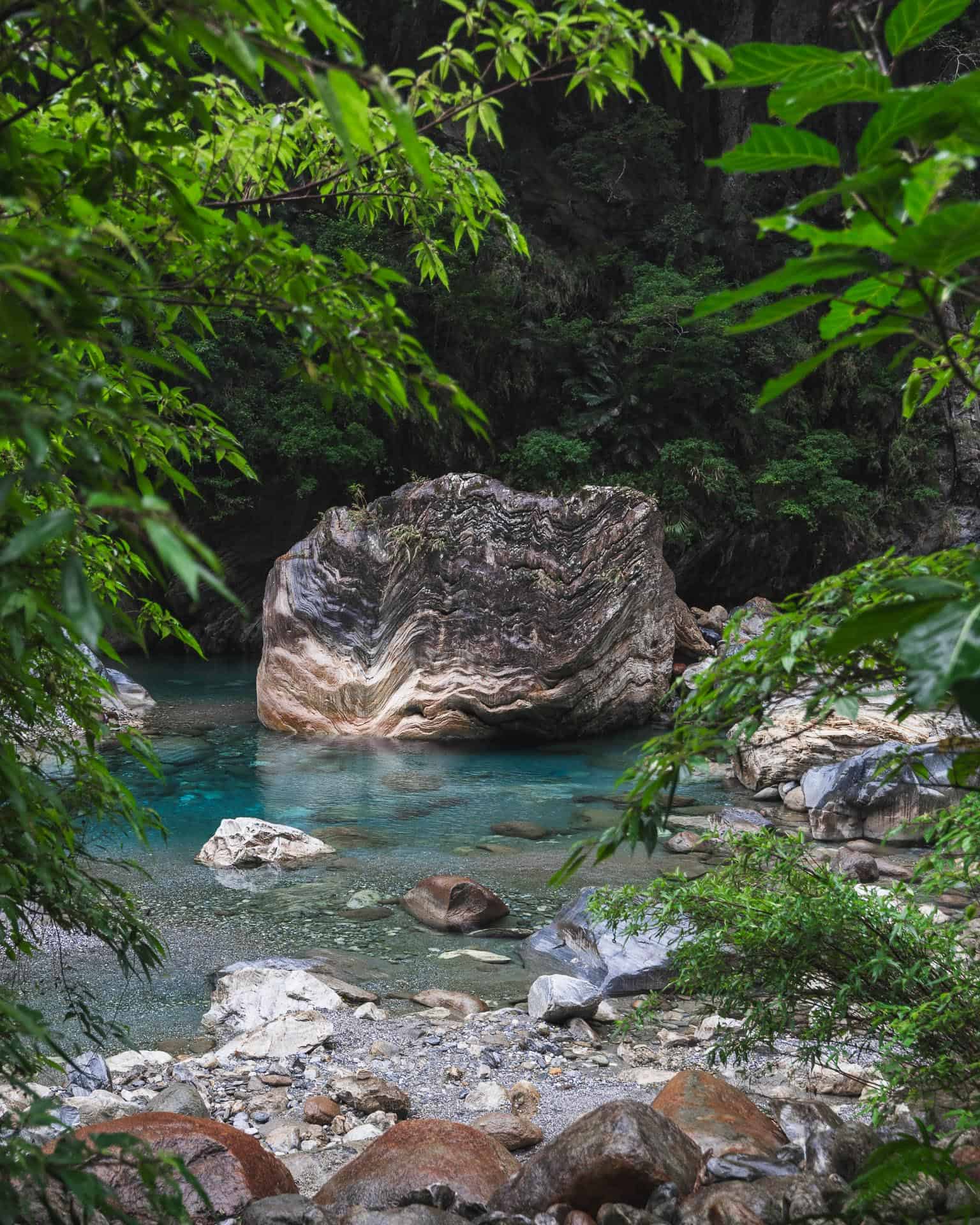
About 1.5 km up the trail, we came across the Shakadang Five Houses—a small market owned by Indigenous Taroko (Truku) people.
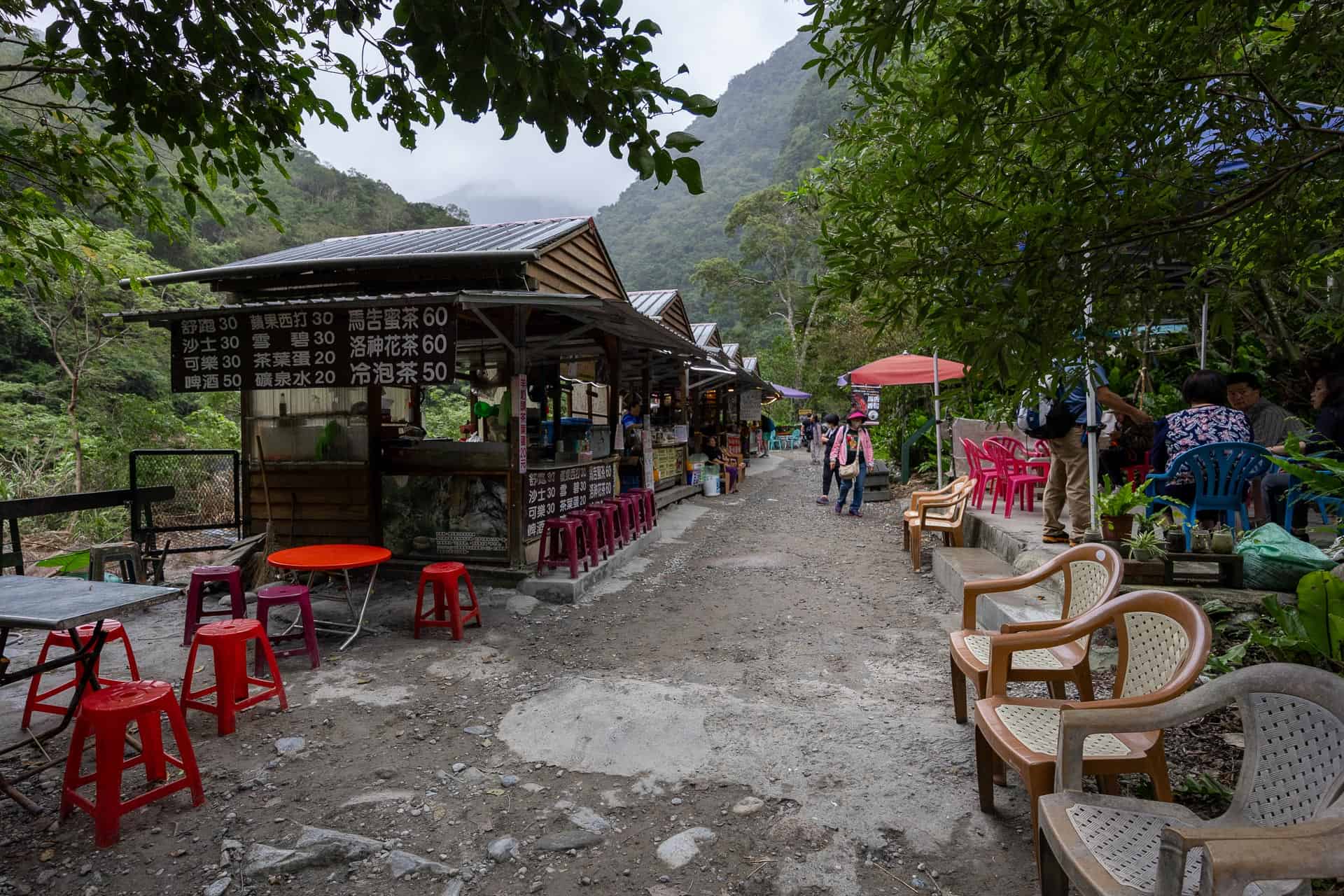
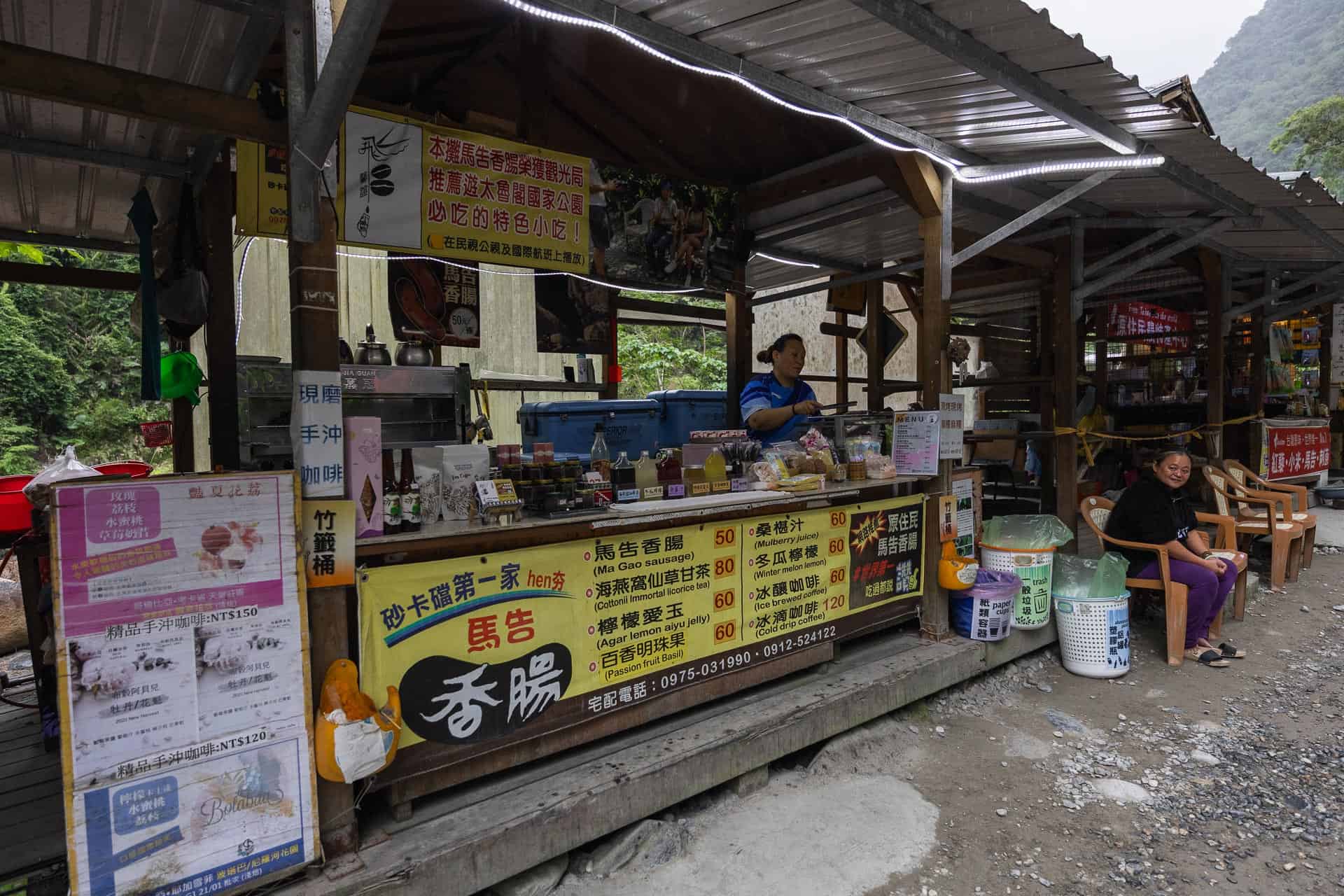
At the Five Houses, we tried aiyu jelly—a sweet jelly made from the gel of fig seeds.
We were hungry, so we bought a piece of purple millet mochi. The shop owner grilled the mochi on a BBQ before handing it to us. We’ve eaten mochi countless times—but never BBQ’d. It was an awesome snack to take a break from the trail.
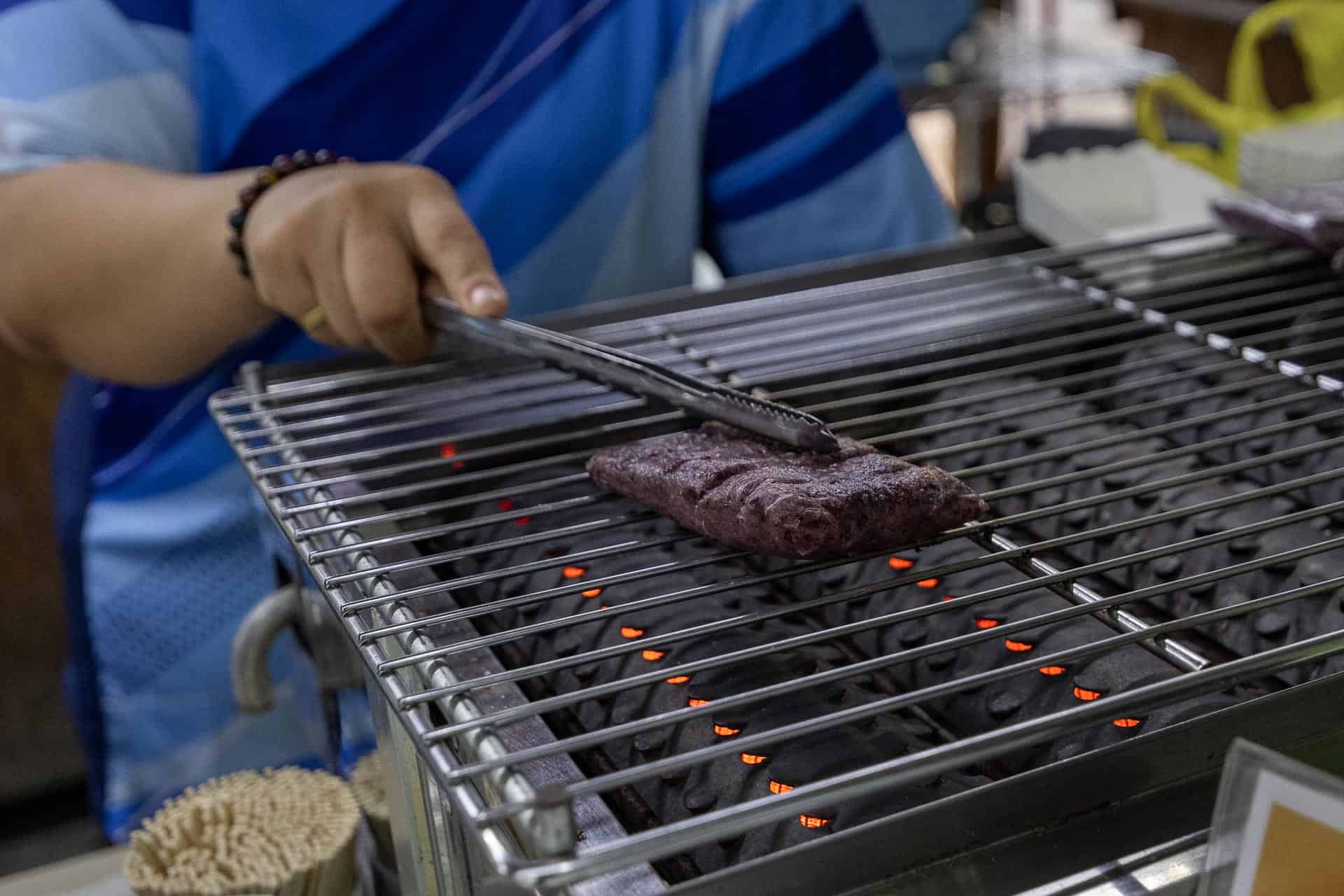
The Five Houses are also known for its magao peppercorn sausage and coffee, so it’s the perfect pit stop to take a break and recharge on the trail. Remember to bring some cash!
Qingshui Cliff
📍 Qingshui Cliff – Google Maps
The Qingshui Cliff is a dramatic sea cliff that rises almost vertically out of the Pacific Ocean, reaching heights of up to 800 meters. It stretches along Taiwan’s northeastern coastline for about 21 kilometers.
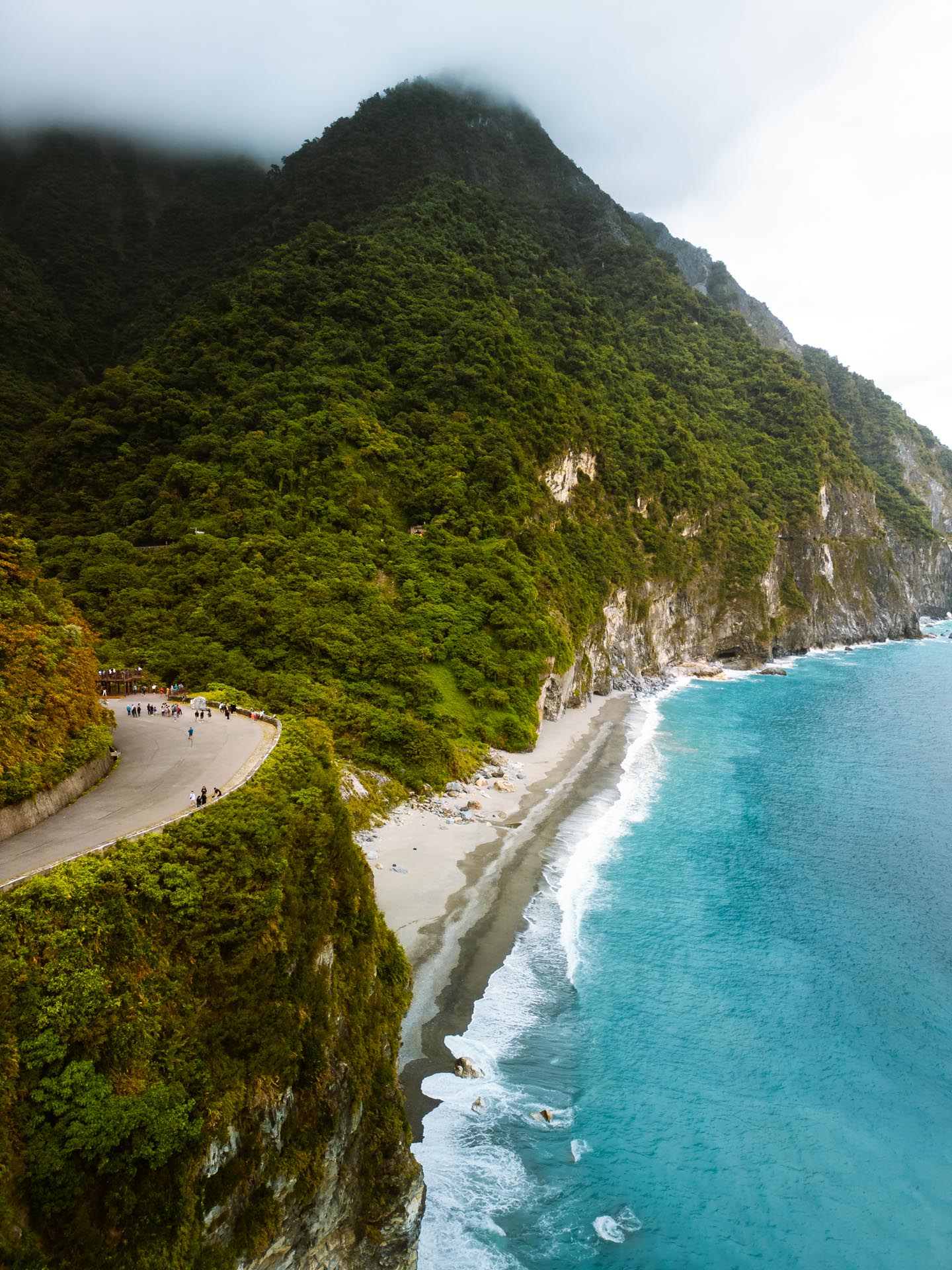
The geological composition of the Qingshui Cliff plays a crucial role in its steep appearance. The cliffs are primarily composed of green schist, gneiss, and marble. These types of rocks are less likely to weather and collapse, giving the cliffs their dramatic shape.
While the Qinshui Cliff isn’t in Taroko Gorge, it’s right outside the gorge and worth a visit if you have a car or motorbike.
If you visit the Qingshui Cliff, use your GPS to navigate and park at Huide Rest Stop. That is the start of the road that goes to the Qingshui Cliff viewpoint.
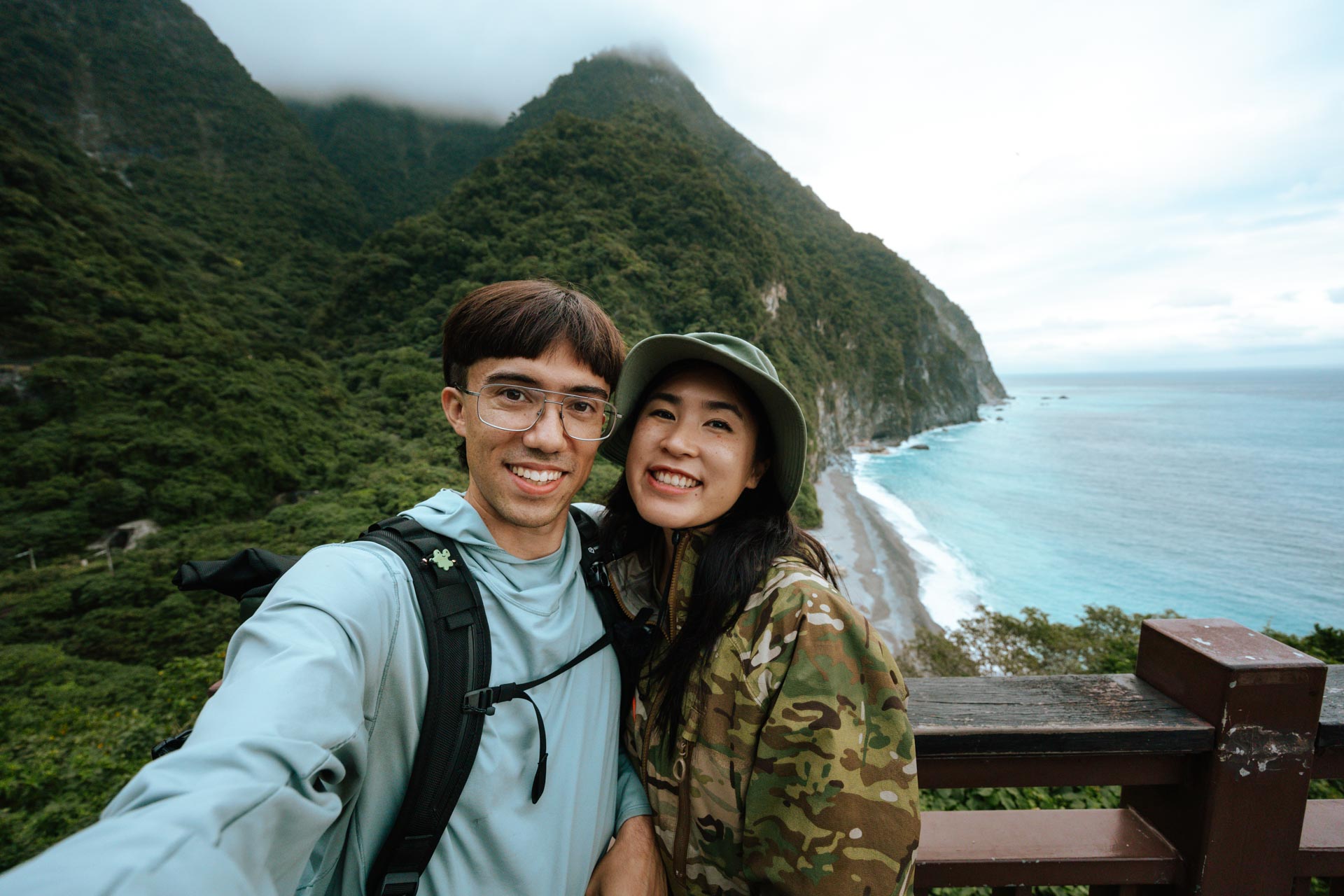
More Hikes in Taroko Gorge
- Tunnel of Nine Turns: The Tunnel of Nine Turns goes through one of the most scenic areas of Taroko Gorge. The trail used to be part of a road and is paved, so it’s a flat walk. There is extremely limited parking in this area, so you should plan to get dropped off or ride the bus to get to this hike.
- Dali-Datong Trail: This trail begins at the Taroko National Park Visitor Center and goes up the mountain to the Truku villages of Dali and Datong. Going to the village of Dali can be done in a day, but it’s recommended that you arrange for overnight accommodations in one of the villages if you trek to Datong. This trail can be confusing, so it’s recommended that you have a guide for this hike.
- Dekalun Trail: This short trail starts behind the Taroko National Park Visitor Center and goes about 1.3 km up the mountain. Two viewing platforms on the trail offer expansive views of the ocean, Taroko Terrace, and the mouth of the Liwu River.
- Lushui Trail: A short, flat, family-friendly trail that goes through a stone tunnel.
- Baiyang Trail: Originally built in 1984, this trail is a paved road that was supposed to be used by the Taiwan Power Company during a project to dam Taroko Gorge for hydroelectricity. The trail goes through a series of tunnels and brings you to viewpoints where you can see waterfalls.
How to Get to Taroko Gorge
Getting to Taroko Gorge from Taipei is relatively straightforward, as multiple methods of transportation can suit different budgets, time constraints, and travel styles.
Taroko Gorge Day Trip from Taipei
If you are based in Taipei you can check out the top-rated Taroko Gorge One-Day Tour from Taipei, which includes transportation and a guide to Taroko Gorge.
Train
If you’re coming from Taipei, you can get to Taroko Gorge by riding the train to Hualien, then renting a car from Hualien and driving 40 minutes to Taroko Gorge.
We recommend booking train tickets in advance, as they tend to get sold out ahead of time, especially during peak seasons. You can book train tickets directly from the Taiwan Railways website.
Taroko Gorge is notorious for road closures due to rockfalls. Before your trip to Taroko Gorge, check the Taroko National Park Road Conditions Website for the latest road closures updates.

Car
Renting a car to visit Taroko Gorge is one of the best ways to see the gorge since you’ll be able to quickly drive to all of the spots to go sightseeing.
If you drive a car into Taroko Gorge, there is parking at nearly all of its attractions and trailheads. However, parking tends to fill up at some of the more popular attractions, such as Swallow Grotto and Zhuilu Old Road Trail.
There are areas along the roadside where you can park as well, so at the worst, you’ll need to drive a little further to find parking, then walk to where you want to go.
We personally recommend and ALWAYS use Klook to rent a car in Taiwan. They interface with local Taiwanese car rental companies, so you can get the best deal possible.
Bus
The local bus system goes through Taroko Gorge, however, we do not recommend using the bus to visit Taroko Gorge. The local buses are not frequent and they tend to get extremely full.
We caught the bus one time during our trip to Taroko Gorge and we wouldn’t do it again. After we finished the Zhuilu Old Road Trail, we waited 1 hour for the bus to arrive.
Because of the hour-long wait, a long line of bus riders formed. We became part of a huge group of people waiting for the bus. When we finally got on the bus it was PACKED! Standing room only.
Standing on the bus as it powered through the winding roads of Taroko Gorge nearly got us sick, and it was overall a miserable experience.
Taxi
Hiring a taxi is one of the most convenient ways to get you to Taroko Gorge. We chose to take a taxi to Taroko Gorge from Hualien when we hiked the Zhuilu Old Road Trail because we were on a limited time schedule.
We tried to ride the bus but the clerk let us know there could be road closures so if we didn’t want to miss our hike, it’s best to take a taxi early in the morning.
The taxi cost us NT $700 ($22 USD).
Keep in mind that there are no rideshare services in Hualien, so Uber is not an option there.
Where to Stay When Visiting Taroko Gorge
Most people who visit Taroko Gorge stay in Hualien, which is the closest city to Taroko Gorge. It takes about 40 minutes to drive from Hualien to Taroko Gorge.
Another option is to stay in Xincheng near the train station. Xincheng is a town that starts right next to Hualien and extends to the entrance of Taroko Gorge. It takes about 10 minutes to drive from Xincheng Taroko Station to Taroko Gorge.
The drawback of staying in Xincheng is that there’s not much there. So I recommend staying there if you only plan to spend all your time in Taroko Gorge.
On the flip side, tons of hotels and bed & breakfasts in Xincheng are catered toward visitors to Taroko Gorge. However, many of them are pricier, so if you’re on a budget, staying in Hualien is a better option.

We stayed at Mini Voyage Hostel in Hualien when we visited Taroko Gorge and would absolutely stay there again, especially since it was clean.
If you want to stay at a hotel that’s right in Taroko Gorge itself, here are a few options:
How Long Should You Spend at Taroko Gorge?
If you have a car or a motorbike and only want to go sightseeing (no hiking) at all of the main spots in Taroko Gorge, then 1 day is enough to visit Taroko Gorge.
However, if you want to experience Taroko Gorge’s natural terrain by doing some hikes then we recommend spending 2 to 3 days there.
What’s the Best Time to Visit Taroko Gorge?
The best time to visit Taroko Gorge is from October through April. These months see comfortable temperatures and less rain than the rest of the year.
If you visit Taroko Gorge during October or November, you might be able to catch the Taroko Gorge Music Festival since it happens during that time of year.
Avoid the the summer months of June, July, August, and September, since they bring high temperatures, rain, and humidity.
The month of May generally has decent temperatures, but it is one of the rainiest months of the year, with the chance of rain steadily increasing throughout the month.


